Filter Search
New Residential Projects in Mumbai | Pre Launch Projects in Mumbai
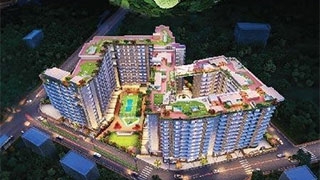
Parleshwar Aangan
Vile Parle East, Vile Parle East, Mumbai
1 BHK, 2 BHK, 3 BHK & 4 BHK Flats Flat
440 Sq.ft - 1360 Sq.ft
1.65 Cr Onwards
Panom Developers
+91 98197 02366
1 BHK Flats:Carpet Area: 440 Sq.ft, 442 Sq.ft, 446 Sq.ft, 447 Sq.ft, 450 Sq.ft, 476 Sq.ft2 BHK Flats:Carpet Area: 676 Sq.ft, 680 Sq.ft3 BHK Flats:Carpet Area: 900 Sq.ft4 BHK Flats:Carpet Area: 1360 Sq.ftBuilding Details:2.41 Acres Land / 2 Towers / 90 Units / G + 11 Storey...

2 BHK for sale in Ekta Tripolis
6, Siddharth Nagar Rd, Motilal Nagar I, Goregaon West, Goregaon West, Mumbai
2 BHK Apartment Flats
Carpet Area: 775 Sqft
2.90 Cr Onwards
Ekta Group
Investor / Resale Options Available
+91 97690 25551
A well-designed 2 BHK apartment is available for sale in the prestigious Ekta Tripolis, located at 6, Siddharth Nagar Road, Motilal Nagar I, Goregaon West, Mumbai. This semi-furnished apartment offers a generous carpet area of 775 square feet, providing ample space for comfortable living. Developed ...

3 BHK for Sale in Ekta Tripolis
6, Siddharth Nagar Rd, Motilal Nagar I, Goregaon West, Goregaon West, Mumbai
3 BHK Apartment Flats
Carpet Area: 1084 Sqft
4 Cr Onwards
Ekta Group
Investor / Resale Options Available
+91 97690 25551
3 BHK apartment for sale in Ekta Tripolis, Goregaon West. It has spacious carpet of 1084 Sqft...
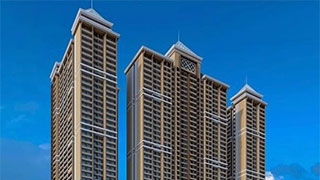
JP Infra North Aviva
Vinay Nagar, Mira Road, Mira Road, Mumbai
1 BHK Flats Flats
Carpet Area : 360 Sq.ft
62 Lacs Onwards
JP Infra Mumbai Pvt. Ltd.
+91 98197 02366
...
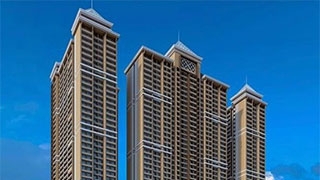
JP Infra North Alexa
Vinay Nagar, Mira Road, Mira Road, Mumbai
1 BHK Flats Flats
Carpet Area : 455 Sq.ft - 508 Sq.ft
77 Lacs Onwards
JP Infra Mumbai Pvt. Ltd.
+91 98197 02366
1 BHK Flat Carpet Area : 455 Sq.ft, 488 Sq.ft, 508 Sq.ft...
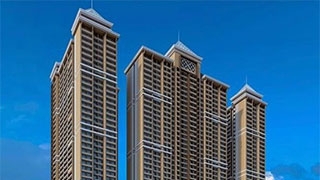
JP Infra The Palace Tower C
Kashimira, Mira Road, Mira Road, Mumbai
1 BHK, 2 BHK, 3 BHK Flats Flats
496 Sq.ft - 951 Sq.ft
77 Lacs Onwards
JP Infra Mumbai Pvt. Ltd.
+91 98197 02366
1 BHK Flat Carpet Area : 496 Sq.ft. 2 BHK Flat Carpet Area : 638 Sq.ft. 3 BHK Flat Carpet Area : 951 Sq.ft....
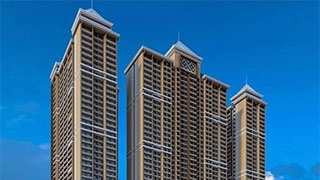
JP Infra North Barcelona Wing D
Western Express Highway, Mira Road, Mira Road, Mumbai
2 BHK, 3 BHK Flats Flats
Carpet Area : 734 Sq.ft - 1098 Sq.ft
1.30 Cr Onwards
JP Infra Mumbai Pvt. Ltd.
+91 98197 02366
2 BHK Flats Carpet Area : 734 Sq.ft 3 BHK Flats Carpet Area : 1007 Sq.ft, 1098 Sq.ft...
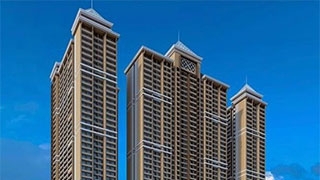
JP Infra Starlife
Western Express Highway, Mira Road, Mira Road, Mumbai
1 BHK, 2 BHK, 3 BHK Flats Flats
404 Sq.ft - 889 Sq.ft
On Request
JP Infra Mumbai Pvt. Ltd.
+91 98197 02366
1 BHK Flats Carpet Area : 404 Sq.ft, 453 Sq.ft2 BHK FlatsCarpet Area : 558 Sq.ft, 700 Sq.ft3 BHK FlatsCarpet Area : 785 Sq.ft, 889 Sq.ft Ground + 4 level Mall + 39 Habitual floors...
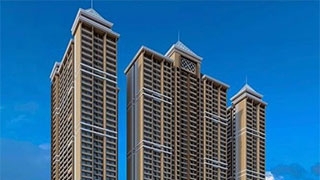
JP Infra The Palace Tower B
Kashimira, Mira Road, Mira Road, Mumbai
1 BHK, 2 BHK, 3 BHK Flats Flats
405 Sq.ft - 845 Sq.ft
73 Lacs Onwards
JP Infra Mumbai Pvt. Ltd.
+91 98197 02366
...

The Address by GS Bandra Tower C
Nirmal Nagar, Bandra East, Bandra East, Mumbai
2 BHK, 3 BHK Flats Flats
680 Sq.ft - 1200 Sq.ft
2.66 Cr Onwards
Raymond Realty
+91 98205 75619
2 BHK FlatsCarpet Area : 680 Sq.ft, 680 Sq.ft, 680 Sq.ft3 BHK FlatsCarpet Area : 1200 Sq.ft, 1200 Sq.ft, 1200 Sq.ft...

Rustomjee Ocean Vista
Versova, Andheri West, Andheri West, Mumbai
4 BHK Flats Flats
Carpet Area : 2394 Sq.ft, 2521 Sq.ft.
On Request
Rustomjee Builders
+91 98205 75619
...
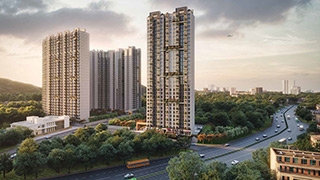
Ajmera PVLR
Bhandup West, Bhandup West, Mumbai
1 BHK & 2 BHK Flats Flats
Carpet Area : 379 Sq.ft - 758 Sq.ft
64.99 Lakhs Onwards
Ajmera Group
+91 98197 02366
...

6 BHK Triplex Apartment for Sale in Wadhwa Imperial Heights
BEST Colony Road, Goregaon West, Goregaon West, Mumbai
6 BHK Triplex Apartment Triplex Apartm
Carpet Area : 5680 Sq.ft.
25 Cr.
Wadhwa Group
Investor / Resale Options Available
+91 7977640320
...

3 BHK Flat for Sale in Chandak Stella
Udyog Nagar, Goregaon West, Goregaon West, Mumbai
3 BHK Flat Flats
Carpet Area : 900 Sq.ft.
3.05 Cr.
Chandak Group
+91 7977640320
...
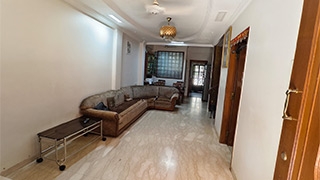
4 BHK Bungalow for Rent
Siddharth Nagar, Goregaon West, Goregaon West, Mumbai
4 Beds Bungalows
Carpet Area : 1600 Sq.ft
Rent : 1.30 Lacs, Deposit : 5 Lacs
a reputed developer
+91 7977640320
4 BHK Bungalow for Rent...

Earth Enclave
Girgaon, Girgaon, Mumbai
2 BHK, 3 BHK, 5 BHK Flats & Commercial
700 Sq.ft - 3200 Sq.ft
On Request
Earth Graphics
Investor / Resale Options Available
+91 98205 75619
...

2 BHK Flat for Sale Carpet 775 Sq.ft in Ekta Tripolis
Siddharth Nagar, Goregoan West, Goregaon West, Mumbai
2 BHK Flats Flats
Carpet Area : 775 Sq.ft
2.80 Cr
Ekta Group
+91 97690 25551
...

Hiranandani Gardens Daffodil
Hiranandani Gardens, Powai, Powai, Mumbai
2 BHK Flats & Offices Flats
1000 Sq.ft - 1600 Sq.ft
On Request
Reputed Builder
Investor / Resale Options Available
+91 98205 75619
2 BHK FlatsCarpet Area : 1000 Sq.ft, 1100 Sq.ftOffice SpaceCarpet Area : 1600 Sq.ft...

Turner Heights
Turner Road, Bandra West, Bandra West, Mumbai
6 BHK Flats & Showrooms Flats
Carpet Area : 2000 Sq.ft - 12168 Sq.ft
32 Cr Onwards
Reputed Builder
Investor / Resale Options Available
+91 98205 75619
6 BHK Flats : Carpet Area :12168 Sq.ft. Showroom Carpet Area : 2000 Sq.ft...
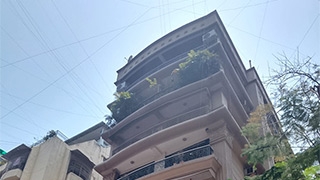
3 BHK Flat for Sale in Saidhan Infinity
16th Rd, near Khar Gymkhana, Khar West, Khar West, Mumbai
3 BHK Flats Flats
Carpet Area : 1000 Sq.ft
6 Cr
Reputed Builder
+91 98205 75619
...

Saidhan Infinity
16th Rd, near Khar Gymkhana, Khar West, Khar West, Mumbai
3 BHK Flats Flats
Carpet Area : 1000 Sq.ft
6 Cr
Reputed Builder
Investor / Resale Options Available
+91 98205 75619
...
Read More About Mumbai & it's Real Estate Property Market
- Bombay or Mumbai as it is now called is India’s most populous metro with an estimated population of about 19 million people and growing, covering an area of about 600 sq kms.
- Thane and Navi Mumbai are the two major urban habitats on the outskirts of the city.
- Mumbai is the financial and commercial capital of the country and the capital of the state of Maharashtra, located on the western coast of the country.
- Major commercial landmarks located here include the country’s largest and busiest sea port, the state-of-the-art Chhatrapati Shivaji International Airport which hosts the iconic Terminal 2, India's first and most advanced vertical passenger terminal.
- The city is also home to India’s largest Stock Exchange, which is ranked as the third largest in the world and the Reserve Bank of India (RBI), the country’s apex bank.
- Mumbai is also the entertainment capital of India and home to Bollywood, as the Hindi film industry, the most prolific producer of in the world, is popularly referred to.
- One of the most well-developed cities in India, Mumbai is blessed with fast developing infrastructure facilities, a network of roads, railways, expressways and highways and a slew of reputed educational institutions, retail establishments, hotels, financial institutions, restaurants, cinema halls & multiplexes and a ample choice of accommodation.
POPULAR TOURIST ATTRACTIONS
Mumbai is home to several popular tourist and sight-seeing destinations that include the following:
- Gateway of India: Built to commemorate the visit of King George V and Queen Mary to India in 1911, the Gateway of India at Apollo Bunder is one of Mumbai’s most famous and popular landmarks.
- Juhu Beach & Chowpatty Beach: The former, a long stretch of sandy beach between Santacruz and Vile Parle is Mumbai’s most popular beach destination, while the later is located at Marine Lines and is well-known for vendors selling local spicy street food.
- Film City: Now renamed Dadasaheb Phalke Chitranagari, is an integrated film studio complex situated at Goregaon and the shooting venue for a majority of Hindi film potboilers.
- Prince of Wales Museum: The museum not far from the Gateway of India is housed in a carefully preserved mid-Victorian Gothic style building built in 1904 and showcases a rich collection of art, sculpture and priceless antiques.
- Taraporewala Aquarium: Located along the picturesque Marine Drive, this recently refurbished aquarium has fish in varying shapes, sizes and colour and is popular with both adults and kids.
- Haji Ali Dargah: This tomb of a Muslim Saint is located in the Arabian Sea opposite Mahalaxmi temple and can be visited only during low tide.
- Mahalaxmi Temple: This temple located close to the sea off Mahalaxmi is home to three beautiful images of Hindu goddesses, Mahalaksmi, Saraswati and Maharani carved from pure gold.
- Mount Mary Church: Located at Bandar West, it is one of most prominent churches in Mumbai and hosts a popular week-long fair every September attended by people of all faiths.
- Mahalaxmi Race Course: The only horse-racing venue in the city, it is a popular destination for racing enthusiasts for six months from October to April during the racing season.
- Shree Sidhivinayak Ganesh Mandir: This famous temple dedicated to the popular Hindu elephant-headed god Ganesha, is on the corner of Kakasaheb Gadgil Marg and S.K.Bole Marg in Prabhadevi.
- Wankhede Cricket Stadium: The venue for many a memorable cricketing battle featuring top international teams including India, this iconic stadium is still an active venue for cricket.
- Nehru Planetarium & Science Center: Named after India’s first Prime Minister Pandit Jawaharlal Nehru, is located at Worli and features an inflatable dome planetarium that hosts daily shows on astronomy.
- Victoria Gardens (Veermata Jeejabai Bhonsle Udyan): Located at Byculla, these botanical and zoological gardens have an interesting collection of flora and fauna besides a museum building in the Greco-Roman style.
- Essel World Amusement Park: Located on Gorai Island, off Malad, this international-styled theme park and amusement center features over 40 exciting rides, games, and attractions. The Water Kingdom is said to be the largest of its kind in Asia.
- Fantasy Land Amusement Park: A fun park filled with amusement rides within the city limits of Mumbai at Jogeshwari, Fantasy Land is spread over a lush green expanse covering an area of about 30 acres.
DEMOGRAPHICS
- Mumbai’s population in 2013 was estimated to be in the region of a whopping 19mn, while its total metropolitan area is home to more than 20.5 million people.
- The city’s population has grown very rapidly over the past two decades and nearly doubled since 1991, when its population was just 12.5 million.
- The Malad-Dahisar region in the west and the Chembur-Govandi belt in the east have grown the fastest, at between 17 – 20 percent over the last ten decades.
- The number of people living in slums is estimated at 9 million, which is up from 6 million just a decade ago.
- Dharavi, the second largest slum in Asia, is located in central Mumbai and is home to approx 800,000 to 1 million people living in just 2.39 square kilometers (or 0.92 square miles).
- It's also the most literate slum in India with a literacy rate of 69 percent.
- The city has developed a reputation as an urban melting pot with people from all over the country coming here in search of employment opportunities.
- 16 major Indian languages are spoken here, with the most popular being Hindi, Gujarati and Marathi, in addition to a colloquial, mixed form of Hindi called Bambaiya.
- English is widely spoken and is the preferred medium of communication among the city’s large population of white-collared workforce.
- By 2020, Mumbai will have an estimated 24 million people with the highest population density in the world.
- The Greater Mumbai area which presently has a density of 27,348 people per sq km is likely to touch a high of 101,066 per sq mile during this period, the highest concentration of people on the planet.
JOBS & EMPLOYMENT OPPORTUNITIES
- By virtue of being the financial and commercial capital of the country, Mumbai is also the preferred destination for those looking for employment / business opportunities.
- The city contributes an estimated 6.16 percent of the total GDP and also contributes the highest GDP of US$209bn.
- The hub of economic activity, Mumbai is also responsible for contributing approx 10 percent of factory employment, 25 percent of industrial output, 33 percent of income tax collections, 60 percent of customs duty collections, 20 percent of central excise tax collections, 40 percent of India's foreign trade and an estimated INR 4,000cr in corporate taxes.
- Additionally the city is also responsible for 25 percent of industrial output, 70 percent of maritime trade in India and 70 percent of capital transactions to the nation’s economy.
- Mumbai and its surrounding areas also contribute over 20 percent of the state’s GDP.
- The city’s per capita income is a little more than three times that of India.
- By 2020-21 fiscal, Mumbai's GDP Per capita at PPP is expected to reach US$ 23,000.
- A majority of major financial institutions, banks and stock exchanges are based here.
- The city also hosts the headquarters of several Indian and multi-national corporations and leading corporate entities.
- Key commercial and business districts of the city include Nariman Point, Lower Parel, Bandra-Kurla Complex (BKC), while specialized zones like the Santacruz Electronics Export Processing Zone (SEEPZ), Malad’s Mindspace Complex and the International Infotech Park at Navi Mumbai are some of the preferred destinations of the IT and ITES sectors.
- Major sectors contributing to Mumbai’s economic and employment health include: banking & financial services, IT & ITES, media and entertainment, retail, lifestyle, FMCG, branded goods, gems and jewellery among others.
TRANSPORT & CONNECTIVITY
- The city offers commuters multiple options in terms of its mass transit options.
- Popular and cost-effective means of public transport include it suburban railway network, BEST buses, Monorail and Metro services.
- Other popular options available here include black-and-yellow taxis, auto rickshaws and a limited ferry service.
- Trains on the Mumbai Suburban Railway, commonly referred to as Locals form the backbone of the city's transport system.
- The city’s suburban rail network covers a distance of approx 319 route kms and is operated by the Western and Central Railway offering excellent connectivity to most parts of the city and its outskirts.
- Mumbai’s Chhatrapati Shivaji International Airport is among the most modern and busy airports in the country.
- Mumbai Port Trust (MPT) and Jawaharlal Nehru Port Trust (JNPT) are the city’s two major ports. JNPT is the busiest and most modern major port in India.
- The Mumbai Monorail-Phase I (Wadala – Chembur) and Mumbai Metro (Versova – Ghatkopar) are the two new additions to the city’s rapid transport network, having launched services in February 2014 and June 2014 respectively.
- A well-developed network of arterial roads, highways, flyovers and expressways exists to boost inter-city connectivity. Mumbai is also an important junction on several national highways including National Highway 3, 4,8,17 and 22, which have enhanced the city’s connectivity to other cities and states.
ROAD INFRASTRUCTURE STATUS
- Mumbai has approximately 1,900 kms of roads.
- The city’s three main arterial roads include the Eastern Express Highway (from Sion to Thane), the Sion – Panvel Expressway and the Western Express Highway (from Bandra to Borivali).
- Recent projects that have enhanced road connectivity in the city include the Bandra-Worli Sealink, which links the island city to the Western suburbs, the Santacruz-Chembur Link Road (SCLR), a 6.45 km long road connecting the Western Express Highway (WEH) in Santacruz with the Eastern Express Highway (EEH) in Chembur.
- Other road projects in this category include the Sahar Elevated Access Road (SEAR), that connects the WEH in Vile Parle to Terminal T2 at the city’s international airport and the 16.8 km long signal-free Eastern Freeway that stretches from Fort (South Mumbai) to the EEH near Ghatkopar.
KEY UPCOMING INFRA PROJECTS
- A new international airport at Kopra-Panvel near Navi Mumbai to relieve pressure on Mumbai’s only existing international airport at Andheri, Mumbai.
- A 126 km long multimodal corridor from Virar to Alibaug, connecting NH-8, Bhiwandi Bypass, NH-3, NH-4 and NH-4B, NH-17 and the Mumbai-Pune Expressway.
- Metro Line -2, a 31.87 km stretch with 27 Metro stations on the Charkop-Bandra-Mankhurd corridor.
- Metro Line – 3, a 32.50 km long fully underground corridor with 27 stations on the Colaba-Bandra-SEEPZ route.
- Thane-Kasarvadavli Metro Corridor, proposed as an extension to the Wadala-Ghatkopar-Thane Metro Corridor (Line-5 & Line-8).
- Thane- Bhiwandi - Kalyan Monorail corridor, a proposed 23.75km long stretch with 17 stations along the route.
- The proposed Mumbai Trans Harbour Link (MTHL) which is expected to facilitate decongestion in Mumbai by improving connectivity between Island city and main land (Navi Mumbai).
- Proposed MTHL-Metro Link, to connect the mainland to Mumbai through rail-based mass transport, this planned metro corridor will begin from Prabhadevi to Sewri and further to the mainland through Navi Mumbai to a suitable Location on the Panvel-Pen section.
- Mumbai Urban Transport Project II (MUTP – II), an estimated INR 5,300cr project designed to further improve the suburban railway service network and operations.
REALTY MARKET OVERVIEW
- According to industry experts, residential property prices in the city and its suburbs registered an increase of only 7 percent in 2014, mainly due to the new Development Controls rules that came into effect from 2013.
- Given the slowing demand due to high property prices no further appreciation in prices is expected in the near-to-medium term.
- The city’s eastern suburbs from Kurla to Mulund, witnessed a hike of approx 6 percent in 2014 vis-à-vis the previous year, with land still available to launch new projects there.
- Preferred residential destinations in South Mumbai and the city’s western suburbs between Malad and Borivali followed a similar trend.
- Upmarket destinations in the western suburbs like Bandra, Khar, Juhu and Santacruz, reported an average growth in property prices, mainly due to an inadequate supply of high-rises.
- Property rates in surrounding areas like Thane and Navi Mumbai have also remained sluggish due to slowing demand and uncertainty regarding the proposed international airport at Navi Mumbai.
- The only exceptions to this general trend were the suburbs Chembur and Wadala that saw an impressive increase in property prices of about 58 percent and 50 percent respectively in 2014 vis-a-vis the previous year, triggered by the completion of mega infra projects there like the Eastern Freeway and the Monorail.
REALTY MARKET POINTERS
- With demand slowing and prices more-or-less stable, experts believe now is an opportune time to buy property in Mumbai by negotiating a favourable deal with developers.
- Mumbai property prices are expected to increase by an average 6 percent in 2015.
- Sale of residential units in Mumbai during 2014, were pegged at approx 26,407 units, indicating a drop of about 4.6 percent over the preceding year.
- Fast developing areas like Panvel, Ulwe, Mulund and Andheri witnessed the highest demand for residential units in 2014.
- The launch of new projects in 2014 increased by approx 8 percent year-on-year, due to the ongoing slowdown in demand and rising unsold inventory levels.
- Areas including Panvel, Thane, Mulund and Kharghar witnessed the highest supply of housing units in 2014.
Property Trends in Mumbai
Central Suburbs:
There are several stations in Suburbs. To name few of them could be Ambernath, Badlapur, Bhandup, Byculla, Dadar, Ghatkopar, Mulund, Sion, Thane. Rates in this area starts from Rs 2700 per Sq.ft which goes upto Rs 32000/- per sq.ft.
Navi Mumbai:
Some of the stations in this area includes: Airoli, CBD Belapur, Kharghar, Panvel, Vashi, Kalamboli etc. The per sq.ft rates varies between Rs 3500 To Rs 15,500.
South Mumbai:
Locations in South Mumbai is considered to be the richest side of Mumbai. Due to the infrastructures avialble here since the time of Britishers which has now boosted up magnificently. The property rates in these areas starts from Rs 18,000/- per sq.ft which goes upto Rs 76,000/- per sq.ft. To name few locations which lies in this piece of land parcel includes: Altamount Road, Shivaji Park, Colaba, Cuffe Parade, Lower Parel, Nepeansea Road, Worli and many more.
Western Mumbai:
This part of Mumbai is now becoming the most desired locations by most of the property buyers. This is becuase they find the property rates worth it against the kind of facilties available here with convenient access to all the important hubs and also to their Work Place. Though the price are very high, but much lower compared to South side of Mumbai.
Locations which are part of Western Side are as follows: Andheri, Bandra, Borivali, Goregaon, Malad, Kandivali, Vile Parle, Santacruz, Khar, Mira Road, Vasai etc. Where your budget for buying a property would range between Rs 4500 per Sq.ft To Rs 45,000/- Per Sq.ft.
